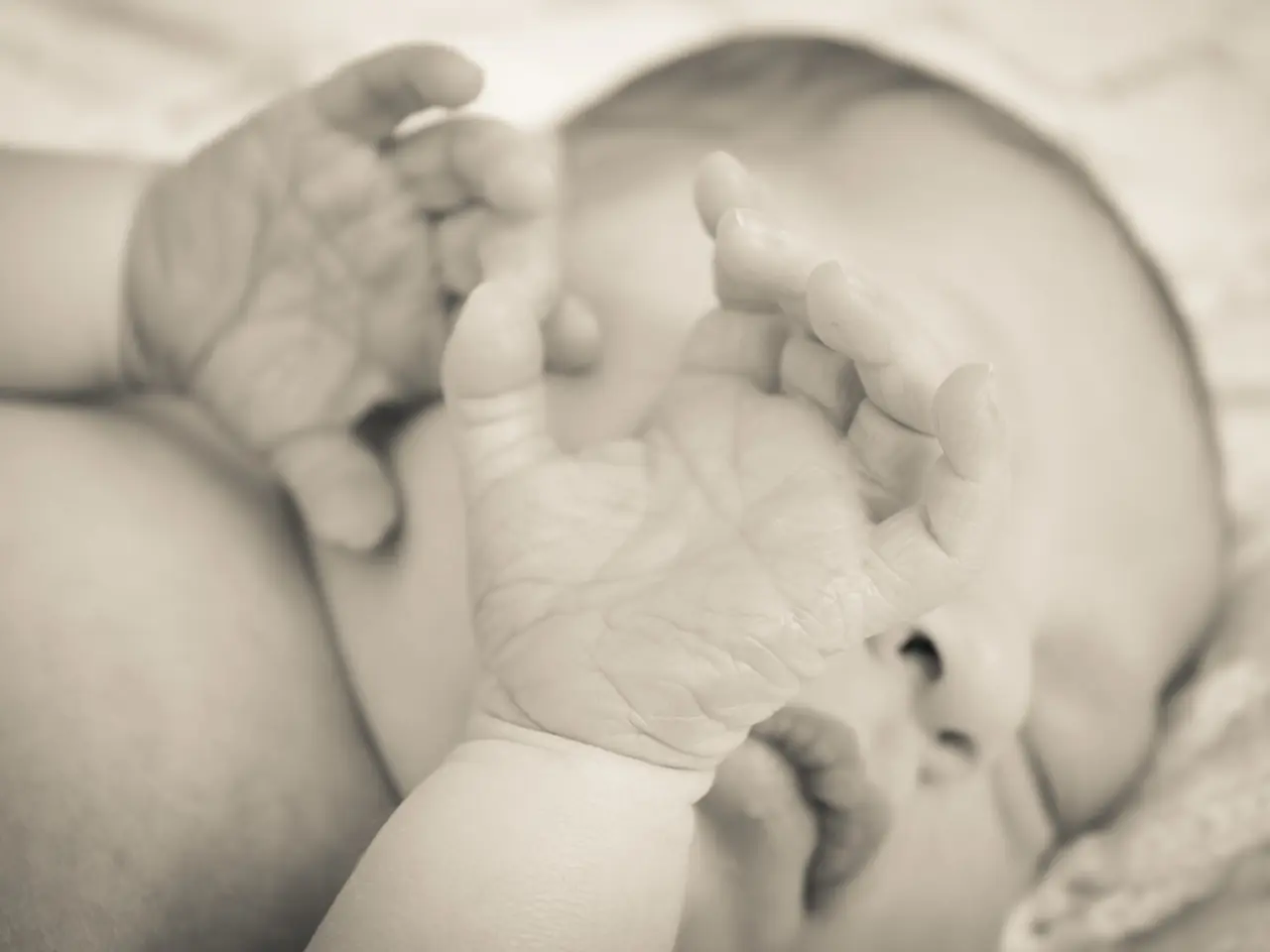Symptoms, risk factors, and methods for identifying cerebral palsy in freshborn infants
Identifying Early Signs of Congenital Cerebral Palsy in Newborns
Newborns with congenital cerebral palsy (CP) may exhibit signs of motor development delays and abnormal muscle tone. Here are some key early signs to look out for:
- In babies younger than 6 months: head lag when picked up from lying on the back, stiffness or floppiness of limbs, overextension of back and neck when cradled, and stiff legs that may cross or scissor when picked up.
- In babies older than 6 months: failure to roll over, inability to bring hands together or to the mouth, and reaching out with only one hand while the other is fisted.
- In babies older than 10 months: crawling asymmetrically, scooting on buttocks or hopping on knees without crawling on all fours.
Additional neurological signs can include seizures, persistent reflexes, involuntary or overactive reflexes, and abnormal muscle tone such as spasticity.
The major risk factors for congenital CP include premature birth, birth complications, congenital brain malformations and genetic abnormalities, maternal infections during pregnancy, neonatal medical conditions, and a family history of CP or neurodevelopmental disorders.
Other early phenomena that may co-occur or mimic CP signs are related birth injuries like spinal cord injury indicated by seizures, weakness, abnormal reflexes, feeding difficulties, and abnormal crying.
Early identification of motor milestone delays and abnormal muscle tone in combination with perinatal risk factors such as prematurity, birth complications, infections, and genetic factors strongly indicate the possibility of congenital CP and warrant further clinical evaluation and monitoring.
Brain imaging tests such as CT or MRI scans, electroencephalogram (EEG), genetic testing, and metabolic testing can help diagnose cerebral palsy. Changes in Apgar scores between 1 and 5 minutes are also a risk factor for cerebral palsy, particularly a 10-minute Apgar score of 0-3 being a higher risk factor than a similar 5-minute score.
[1] American Academy of Pediatrics (AAP). (2017). Clinical Report—Screening and Surveillance for Developmental Milestones: AAP Policy Statement. Pediatrics, 140(3), e20163114.
[2] Centers for Disease Control and Prevention (CDC). (2019). Cerebral Palsy: Causes. Retrieved from https://www.cdc.gov/ncbddd/cp/causes.html
[3] National Institute of Neurological Disorders and Stroke (NINDS). (2019). Cerebral Palsy Fact Sheet. Retrieved from https://www.ninds.nih.gov/Disorders/Patient-Caregiver-Education/Fact-Sheets/Cerebral-Palsy-Fact-Sheet
[4] National Institutes of Health (NIH). (2019). Cerebral Palsy Information Page. Retrieved from https://www.nichd.nih.gov/health/topics/cerebral-palsy
[5] World Health Organization (WHO). (2017). Cerebral Palsy. Retrieved from https://www.who.int/news-room/fact-sheets/detail/cerebral-palsy
- Pediatrics professionals should be aware of the early signs of congenital cerebral palsy (CP) in newborns, as it is crucial for timely intervention and improved health-and-wellness outcomes.
- A neurological examination in infants may reveal signs such as seizures, persistent reflexes, abnormal muscle tone, or involuntary reflexes, which could suggest the presence of CP.
- During parenthood, it is essential to maintain mental-health well-being by staying informed about medical-conditions like CP and chronic-diseases to provide the best care possible for the child.
- Proper nutrition and fitness-and-exercise routines, when combined with an early identification of motor development delays, can help improve a child's chances of overcoming CP or reducing the impact of CP on their daily life.
- Science and medical-advances continue to provide new insights into the causes of CP and the development of treatments, so it is essential for parents to stay informed about the latest research through resources such as the American Academy of Pediatrics, Centers for Disease Control and Prevention, National Institute of Neurological Disorders and Stroke, National Institutes of Health, and World Health Organization.
- Child development monitoring and early intervention programs can help identify and manage CP in newborns and reduce the impact of CP on their growth, mental development, and overall health.




